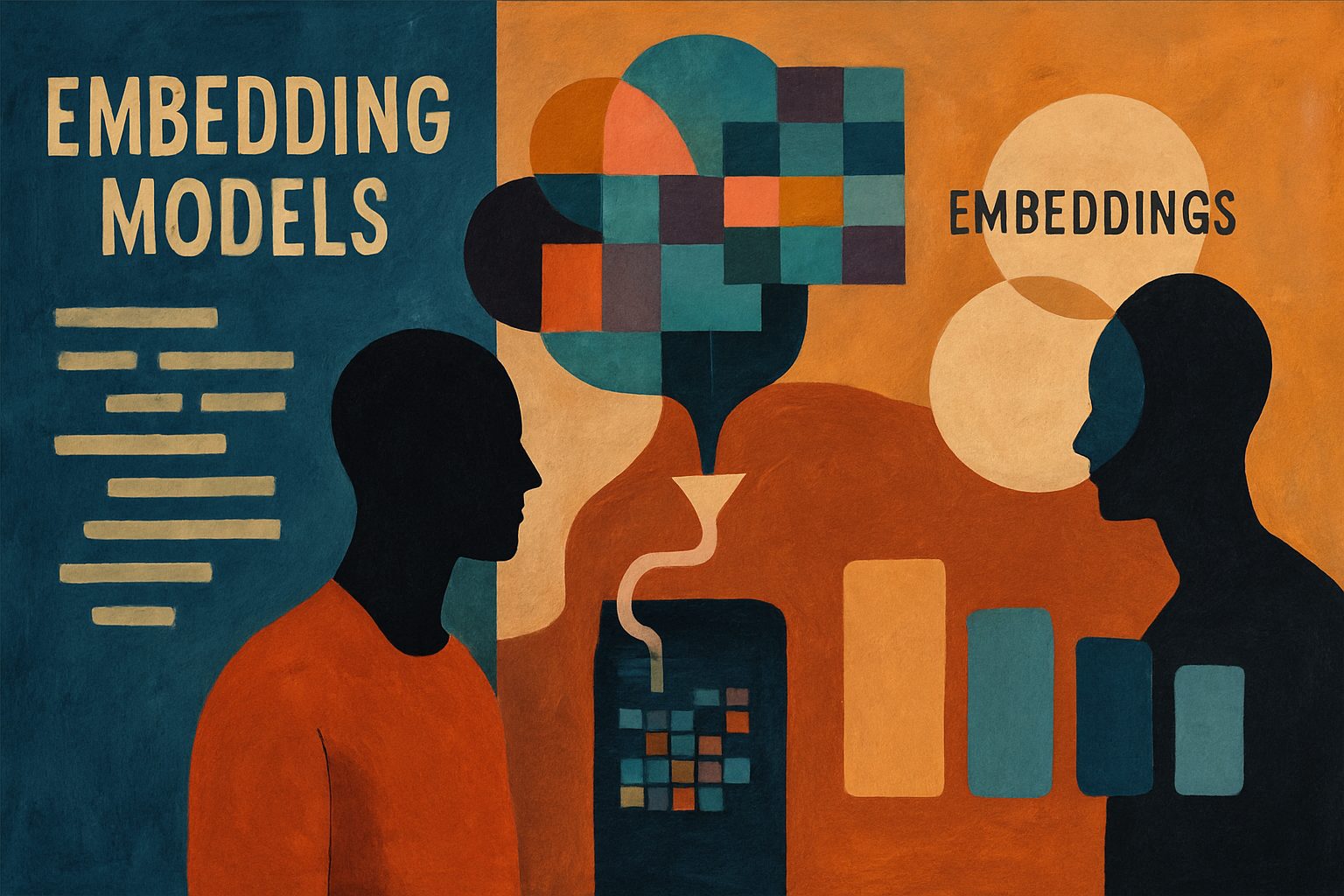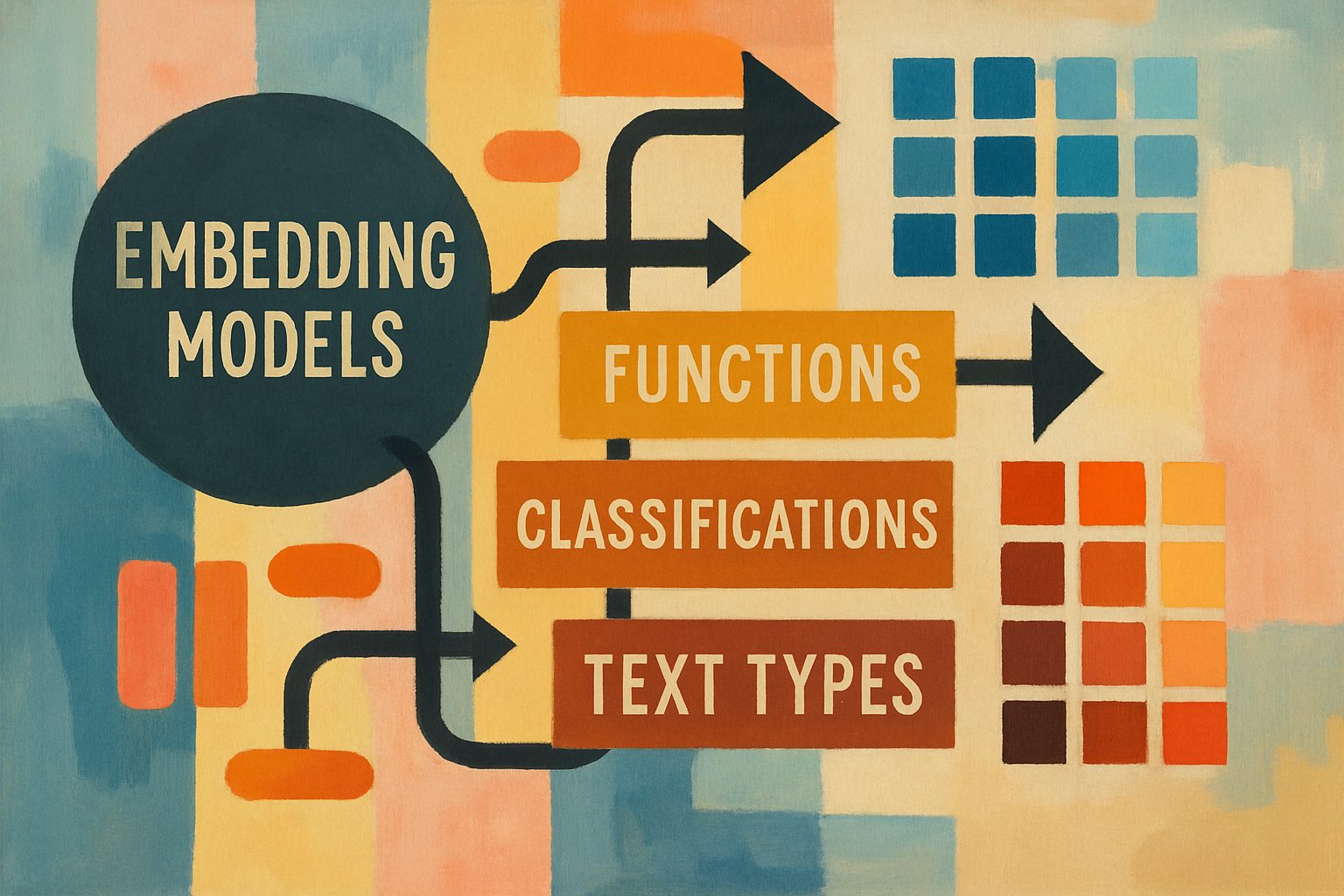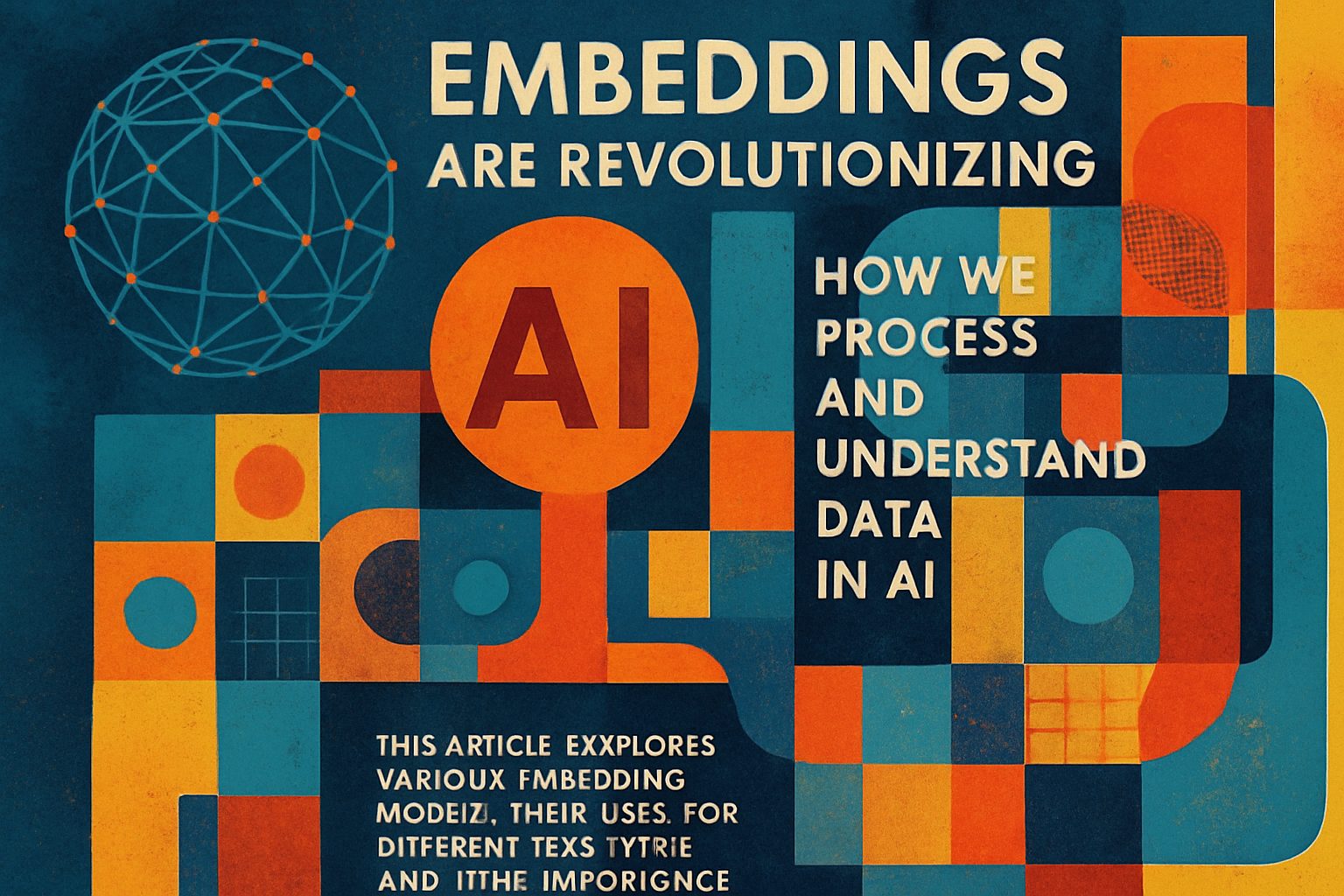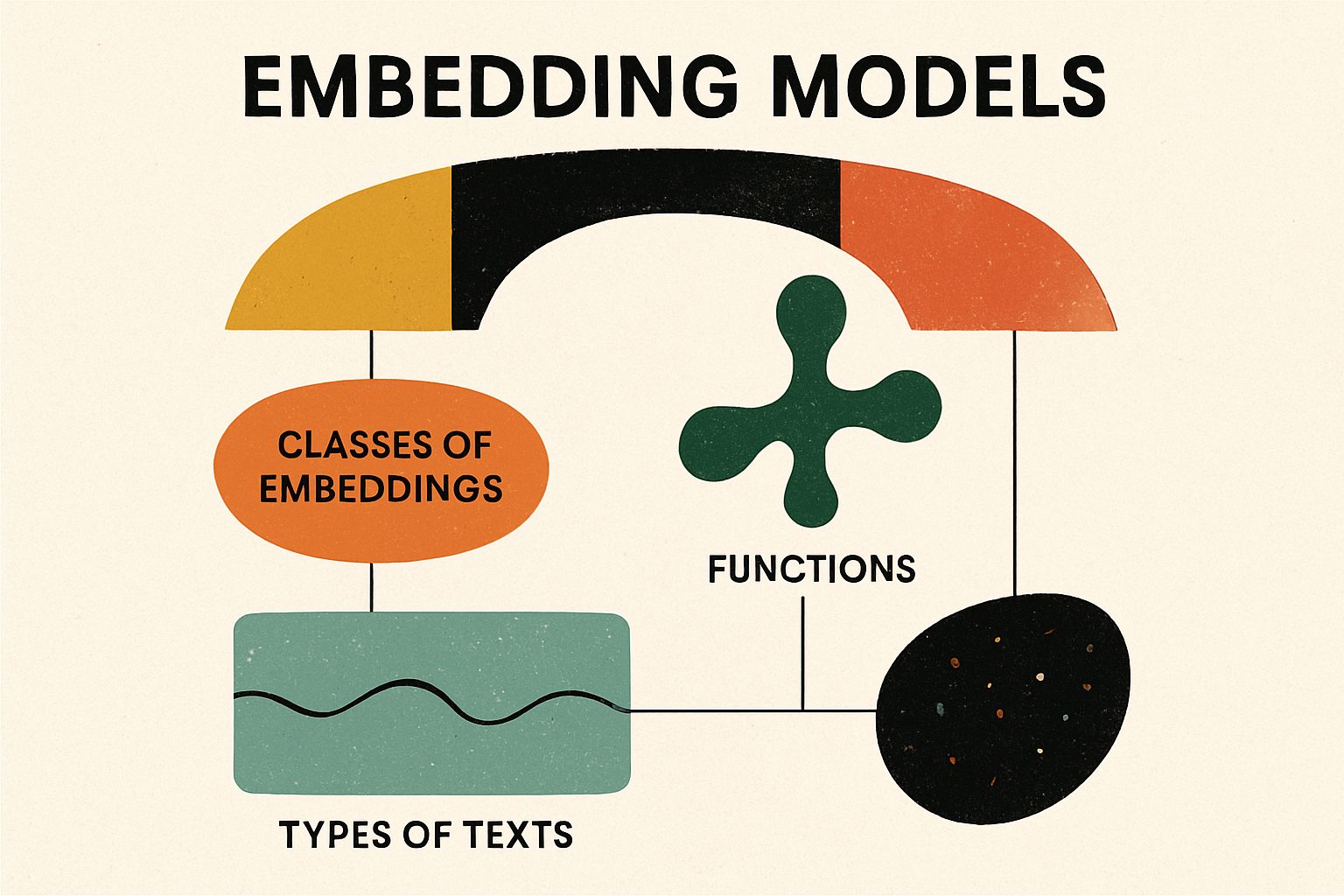
Unlocking the Power of Embedding Models: Your Guide to Textual Intelligence
Dive into the world of embedding models and discover how they transform complex text data into meaningful vectors. This article uncovers the different classes of embeddings and their suitability for various text types, helping you choose the right model for your needs.
This comprehensive analysis explores Compare the different embedding models and explain their functions, as well as the various classes of embeddings available. Specifically, identify which embeddings are suitable for different types of texts, highlighting the relationship between them and providing an explanation for these distinctions., based on extensive research and multiple data sources.
Below is a comprehensive analysis comparing different embedding models, their functions, and the various classes of embeddings available. This content provides a foundational understanding of how these models work and why certain embeddings are more suited for particular types of texts than others.
Thesis:
Embedding models are central to modern natural language processing and other AI domains because they convert high-dimensional data (like text or images) into dense vectors that capture semantic meaning. However, different classes of embeddings—ranging from frequency-based statistical methods to deep neural network–driven models—differ in their modeling techniques, levels of context awareness, and suitability for various text types. Understanding these distinctions is vital to selecting the right embedding for a specific task.

1. Overview of Embedding Models
Embedding models serve the primary function of turning complex inputs (words, sentences, images, or nodes in a graph) into vectors, where spatial proximity implies semantic similarity. According to an introduction on Stack Overflow, these embeddings simplify complex data, making it easier for machine learning systems to perform tasks such as search, classification, recommendation, and even content moderation.
Key Functions:
- Semantic and Syntactic Capture: Embeddings represent words or sentences so that similar meanings or related contexts are placed close together in a vector space.
- Dimensionality Reduction: Models like Word2Vec and TF-IDF reduce the complexity of raw text into manageable, dense vectors.
- Transfer Learning: Pre-trained embeddings (e.g., from transformer-based models like BERT or GPT) can be reused for similar tasks, enhancing performance without having to retrain from scratch.
2. Classes of Embeddings and Their Characteristics
Embedding models generally fall into several broad classes, each with unique methodologies and use cases:
Frequency-Based Embeddings
Example Techniques:
– TF-IDF (Term Frequency-Inverse Document Frequency): Evaluates word importance across documents.
– Co-occurrence Matrices: Captures relationships by counting how frequently words appear together.
Advantages:
– Intuitive, computational
Below is a comprehensive analysis on adaptive techniques, with a focus on adaptive methods in software development and adaptive algorithms. This research article explains the concepts, compares approaches, and provides a reasoned conclusion.
Thesis:
Adaptive techniques—including methods in software development and dynamic algorithms—offer flexible, continuously evolving strategies for managing complex systems and uncertain environments. By emphasizing iterative feedback, continuous learning, and responsiveness to change, these methods provide robust solutions across multiple technical domains.
1. Adaptive Methods in Software Development
Adaptive Software Development (ASD) exemplifies an adaptive approach in which planning, collaboration, and learning are embedded into every phase of the development cycle. This methodology is aimed at handling continuously changing requirements and evolving user needs.
Key Phases of ASD
- Speculation
- Definition: The project is initiated with a flexible plan that accepts uncertainty.
- Key Element: Initial planning is based on incomplete knowledge, making assumptions that will later be validated or adjusted.
-
Source: Learn more from the Wikipedia article on Adaptive Software Development.
-
Collaboration
- Definition: Teams work closely together, fostering open communication and shared responsibility.
- Significance: This phase ensures that feedback from all stakeholders is central, and helps in quickly identifying issues or new opportunities for improvement.
-
Source: Detailed insights available at ThinkPalm’s explanation.
-
Learning
- Definition: Through short iterations, teams reflect on mistakes and refine their methods.
- Implication: Learning through small failures builds mastery over the project domain and gradually hones the product quality.
- Source: This is elaborated upon in various ASD literature, with examples discussed by Jim Highsmith and others.
“Adaptive Software Development replaces traditional linear development cycles with a repeating process of speculate, collaborate, and learn. It acknowledges that change is inevitable and treats it as an asset rather than a hindrance.” – Adaptive Software Development on Wikipedia
Advantages and Limitations of ASD
- **Advantages:
Below is an in-depth analysis comparing various embedding models, their functional distinctions, and which classes of embeddings work best for different types of texts. This discussion examines the theoretical background, practical application, and underlying methods that differentiate these representations in natural language processing.
Thesis & Position
Thesis:
Embedding models are pivotal for reducing the complexity of high-dimensional data into dense vectors that capture semantic relationships. Different classes of embeddings—ranging from frequency-based to neural predictive models—offer distinct advantages for representing text. By understanding their functions and limitations, one can select the best-suited embedding type based on text length, context complexity, and domain specificity.
Overview of Embeddings and Their Functions
At its core, an embedding is a mathematical representation that maps raw text into a dense, lower-dimensional vector space. These vectors capture semantic nuances, allowing algorithms to compare text by measuring distances (using metrics such as Euclidean or cosine distances). For instance, models such as OpenAI’s text-embedding-ada-002 create high-dimensional vectors where similar semantic content is clustered together.
Key functions include:
- Semantic Search: Identify similar documents through distance measures Stack Overflow introduction.
- Classification and Clustering: Precomputed embeddings enable efficient classification tasks like spam detection or sentiment analysis.
- Content Moderation: Embeddings help in detecting abusive language or spam by measuring semantic similarities.
Classes and Categories of Embeddings
Embeddings can be broadly categorized based on the underlying methodology and specific use case. Here are the main classes:
1. Frequency-Based Embeddings
- TF-IDF (Term Frequency-Inverse Document Frequency):
- Function: Evaluates word importance in a document relative to a corpus.
- Best For: Short texts, keyword extraction, and initial document retrieval tasks.
- Advantage: Explainable and simple to implement.
-
Limitation: Does not capture semantic similarity well (see Swimm guide).
-
Co-occurrence Matrices:
- Function: Computes a matrix based on word co-occurrence counts.
- Best For: Capturing statistical associations in specific corpora.
- Advantage: Can highlight relationships in very controlled datasets.
- Limitation: Computationally expensive with large vocabularies.
2. Prediction-Based (Neural) Embeddings
- Word2Vec (Skip-Gram & CBOW):
- Function: Uses neural networks to predict a word’s context or vice versa.
- Best For: Learning continuous word representations that semantically relate similar words (e.g., “king” and “queen”).
- Advantage: Captures fine-grained semantics using vector arithmetic.
-
Limitation: Ignores subword information in its basic form.
-
FastText:
- Function: Extends Word2Vec by incorporating subword (n-gram) information.
- Best For: Handling rare words and morphological variations, especially in morphologically rich languages.
- Advantage: Robust embeddings for out-of-vocabulary words.
-
Limitation: Can increase computational overhead due to additional subword processing.
-
GloVe (Global Vectors):
- Function: Utilizes global co-occurrence statistics to learn a word-context matrix, then factorizes it to derive embeddings.
–
Vyftec – Embedding Models Research
Unlock the power of AI with Vyftec’s expertise in analyzing and comparing various embedding models tailored for specific text types. Experience Swiss quality solutions that drive your digital transformation journey.
📧 damian@vyftec.com | 💬 WhatsApp


